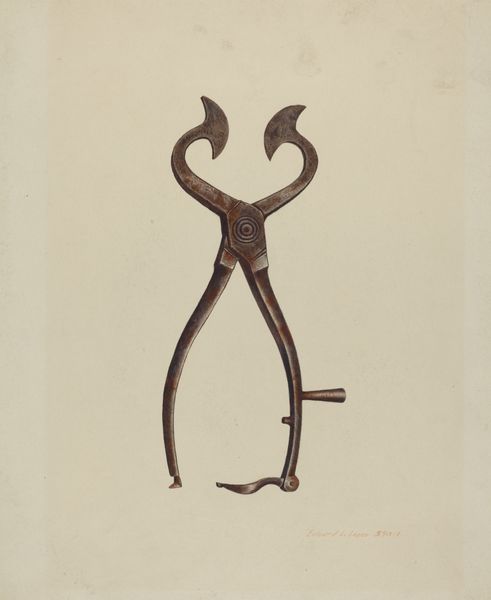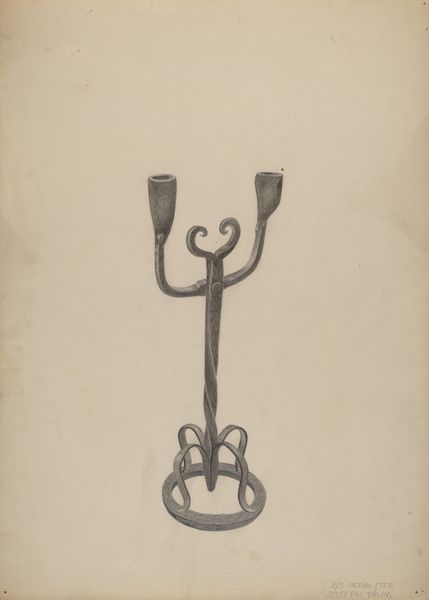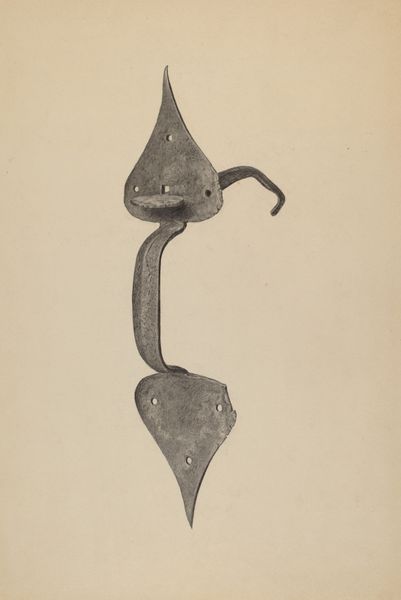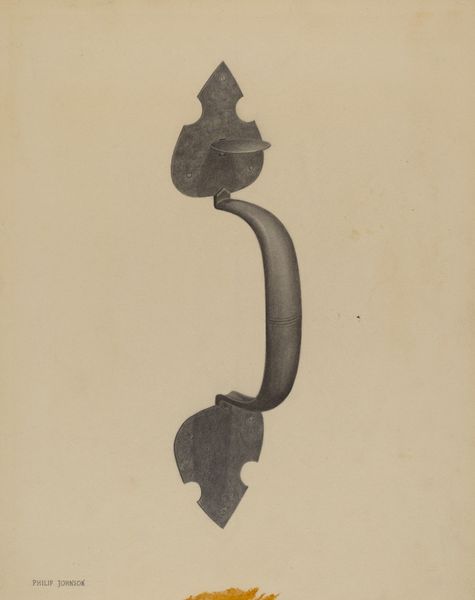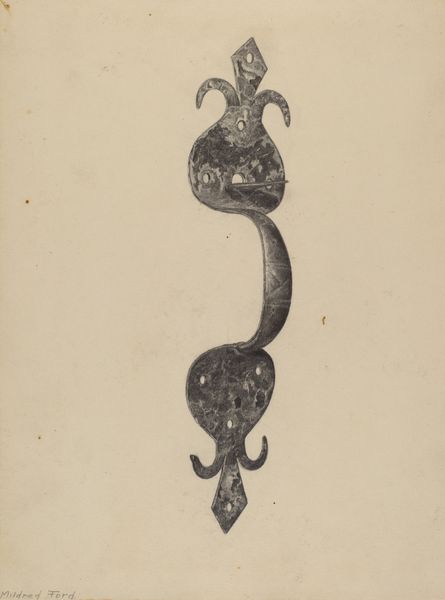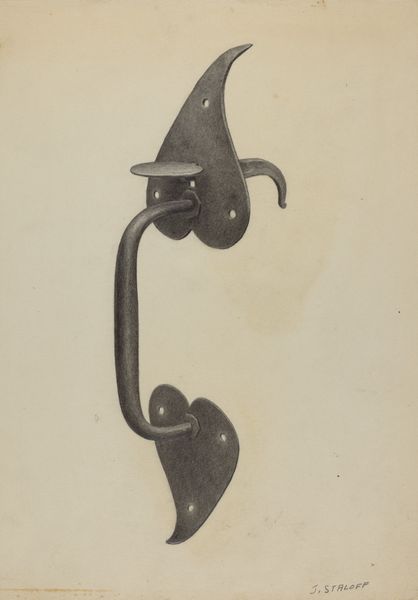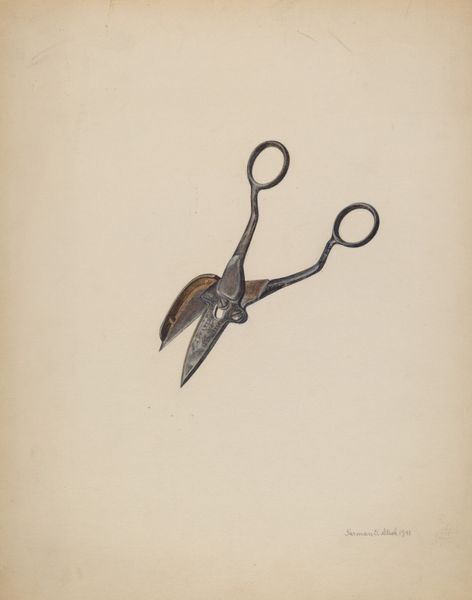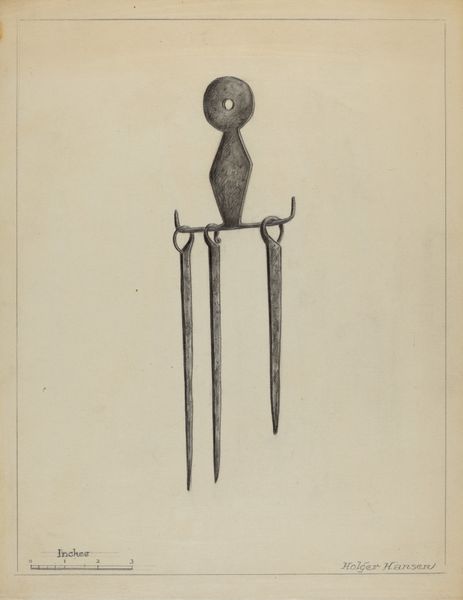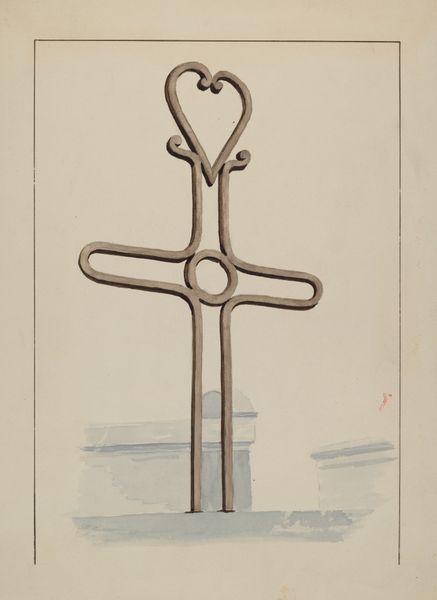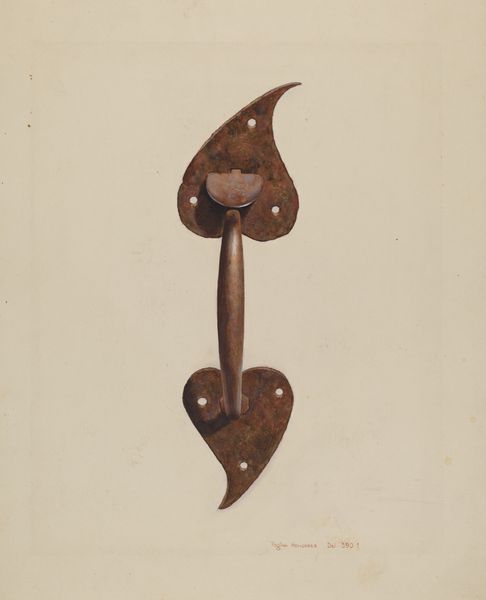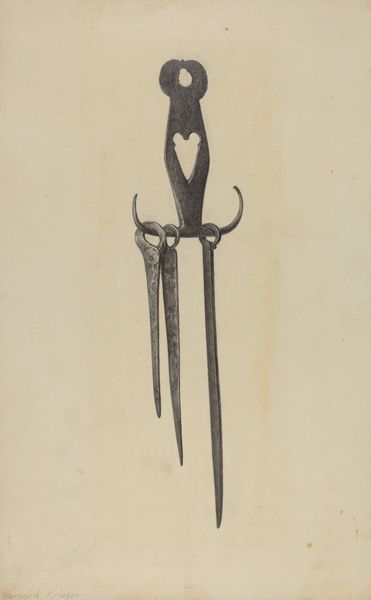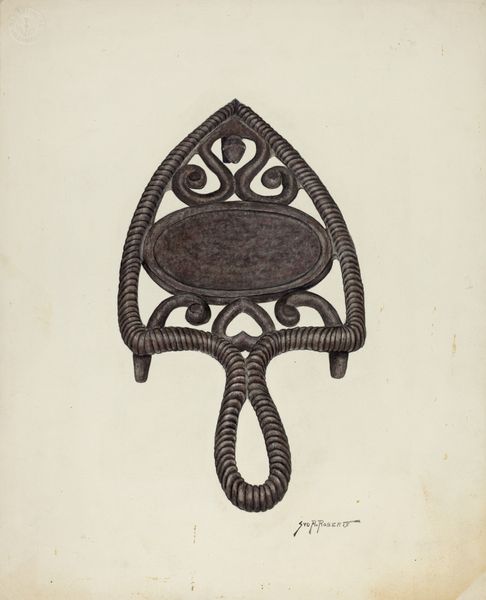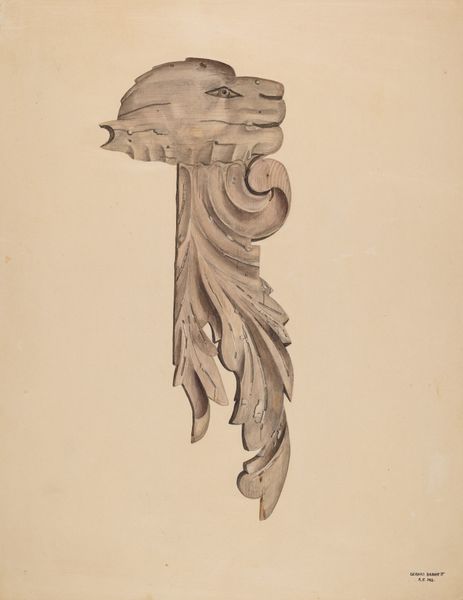![Untitled [abstract forms] [verso] by Richard Diebenkorn](/_next/image?url=https%3A%2F%2Fd2w8kbdekdi1gv.cloudfront.net%2FeyJidWNrZXQiOiAiYXJ0ZXJhLWltYWdlcy1idWNrZXQiLCAia2V5IjogImFydHdvcmtzLzU1OTBmZTM4LTMzMTQtNDNmYi04NjA2LTc1MzQzOTY5MWM1YS81NTkwZmUzOC0zMzE0LTQzZmItODYwNi03NTM0Mzk2OTFjNWFfZnVsbC5qcGciLCAiZWRpdHMiOiB7InJlc2l6ZSI6IHsid2lkdGgiOiAxOTIwLCAiaGVpZ2h0IjogMTkyMCwgImZpdCI6ICJpbnNpZGUifX19&w=3840&q=75)
drawing, ink
#
abstract-expressionism
#
drawing
#
form
#
bay-area-figurative-movement
#
ink
#
geometric
#
abstraction
#
modernism
Dimensions: overall: 43.2 x 35.6 cm (17 x 14 in.)
Copyright: National Gallery of Art: CC0 1.0
Curator: Richard Diebenkorn’s "Untitled [abstract forms] [verso]," created with ink on paper sometime between 1955 and 1967. It’s an intriguing collection of abstract shapes. Editor: My first impression is one of fragmented totems, or perhaps studies for anatomical illustrations… it feels almost archaeological, as if uncovering remnants. The restricted palette creates a sense of austere monumentality, despite its likely small scale as a drawing. Curator: I agree. Each shape, though abstract, evokes symbolic forms: the topmost could be read as a stylized figure in a crescent moon. The stark, black lines certainly suggest a grounding in cultural iconography and perhaps ritualistic emblems. There’s a strong sense of codified language present, even without literal representation. Editor: The contrast between the densely hatched shading and the delicate linework is particularly compelling. Notice how the hatching describes volume and mass while other lines barely suggest edges, resulting in ambiguous forms that oscillate between figuration and pure abstraction. What does this ambiguity suggest to you? Curator: That tension perhaps reveals the subconscious layering within culture itself, those simultaneous presences of solid form and fleeting idea. Diebenkorn plays with how recognizable forms dissolve into abstracted notions of structure, touching upon collective memory. They appear unearthed, like visual echoes that hold an uncertain significance. Editor: Perhaps more precisely, it speaks to a tension innate to the medium of drawing itself. Ink straddles the line between immediacy and intention. These stark marks capture the directness of an immediate creative act while concurrently representing geometric abstractions, revealing process in tandem with the final image. Curator: Ultimately, this interplay shows the timeless drive to distill universal experience through abstracted visual means. There's an ancient quality about its formal vocabulary. Editor: Precisely. And examining those formal qualities—texture, weight, the balance of positive and negative space—opens a direct channel to Diebenkorn's exploration.
Comments
No comments
Be the first to comment and join the conversation on the ultimate creative platform.
